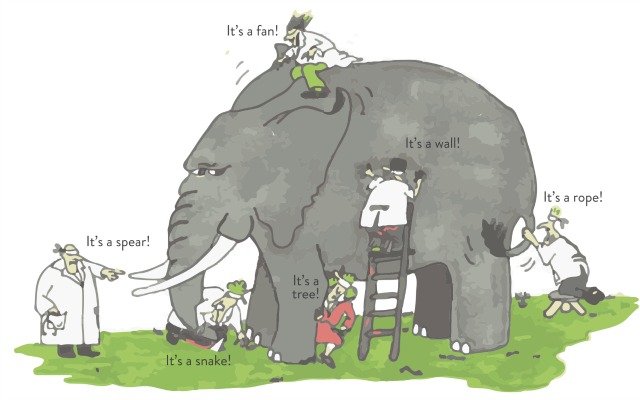About:
THE
HACK
Culture problems don’t come out of nowhere. In fact, most of them are predictable - stemming from differences in how people view the world and process information.
After years of research, we mapped 18 unique Knowledge Filters. The hidden rules each person uses to judge what’s true, what’s valuable, and what it means to succeed.
When leaders ignore them, culture feels like a guessing game. When you map them, culture becomes a strategy.
How Do We Know These Filters Exist?
Imagine this: we’re sitting in a restaurant at a lunch meeting. As we’re wrapping up, a couple sits down at the neighboring table and begins to argue. We can’t help but overhear them, and as the argument unfolds, we each start forming our own stories about who is right, who is wrong, and what they should do about it. Just for fun, we compare notes on our way out and realize our perspectives on the conflict are completely different.
If you think about this as a scientist, it’s bizarre. We were in the same place, at the same time, receiving the exact same data. So how did we end up with such different perspectives?
Our varying perspectives are evidence that we filtered the incoming knowledge differently. These filters shape our perspectives and influence the actions we’d take based on that knowledge.
Bringing this back to the workplace, differing knowledge filters are constantly at play. We share knowledge that seems crystal clear to us, expecting specific actions to follow. Yet, others often interpret the meaning differently, leading to unintended actions, conflicts, and disrupted productivity. Left unchecked, this can contribute to a toxic workplace culture.
With THE HACK, this type of conflict becomes predictable and preventable, helping your team increase productivity and elevate workplace functionality.
How Do These Filters Work?
The scientific term for a knowledge filter is epistemic filter. The word "epistemic" is derived from Epistemology—the study of where knowledge comes from and the process of confirming that we indeed know something.
THE HACK has identified 18 different epistemic or knowledge filters and mapped the compatibility relationships between them in a practical way. Each filter has a unique way of interpreting reality, which you’ll uncover when you take the Sociality Test. Here’s how it works in general:
Knowledge Comes In: Information enters your awareness.
Filtering: The knowledge passes through your epistemic filter - or knowledge filter.
Action: A predictable action or perspective emerges on the other side.
Since most people have the same knowledge filter throughout their entire life, it becomes possible to predict their long-term behavior. Conversely, by carefully observing someone’s behavior patterns, you can reverse engineer their actions to identify the knowledge filter that originally caused them.
What Differentiates the filters?
There are two primary kinds of knowledge: explicit and tacit. Think of knowledge as an iceberg:
Explicit Knowledge: The visible part of the iceberg includes the kind of knowledge you’d find in a Word document, PowerPoint, or Excel spreadsheet. It’s obvious, easy to share, and methods for interpreting this knowledge tend to be consistent and rule-based.
Tacit Knowledge: This is the submerged part of the iceberg. It’s hidden, non-obvious, often unspoken, and difficult to share. And methods for interpretation vary widely from person to person.
The key differentiator between knowledge filters lies in how they prioritize explicit versus tacit knowledge. Some filters heavily prioritize explicit knowledge while some prioritize tacit knowledge, and others are a unique mix of both.


